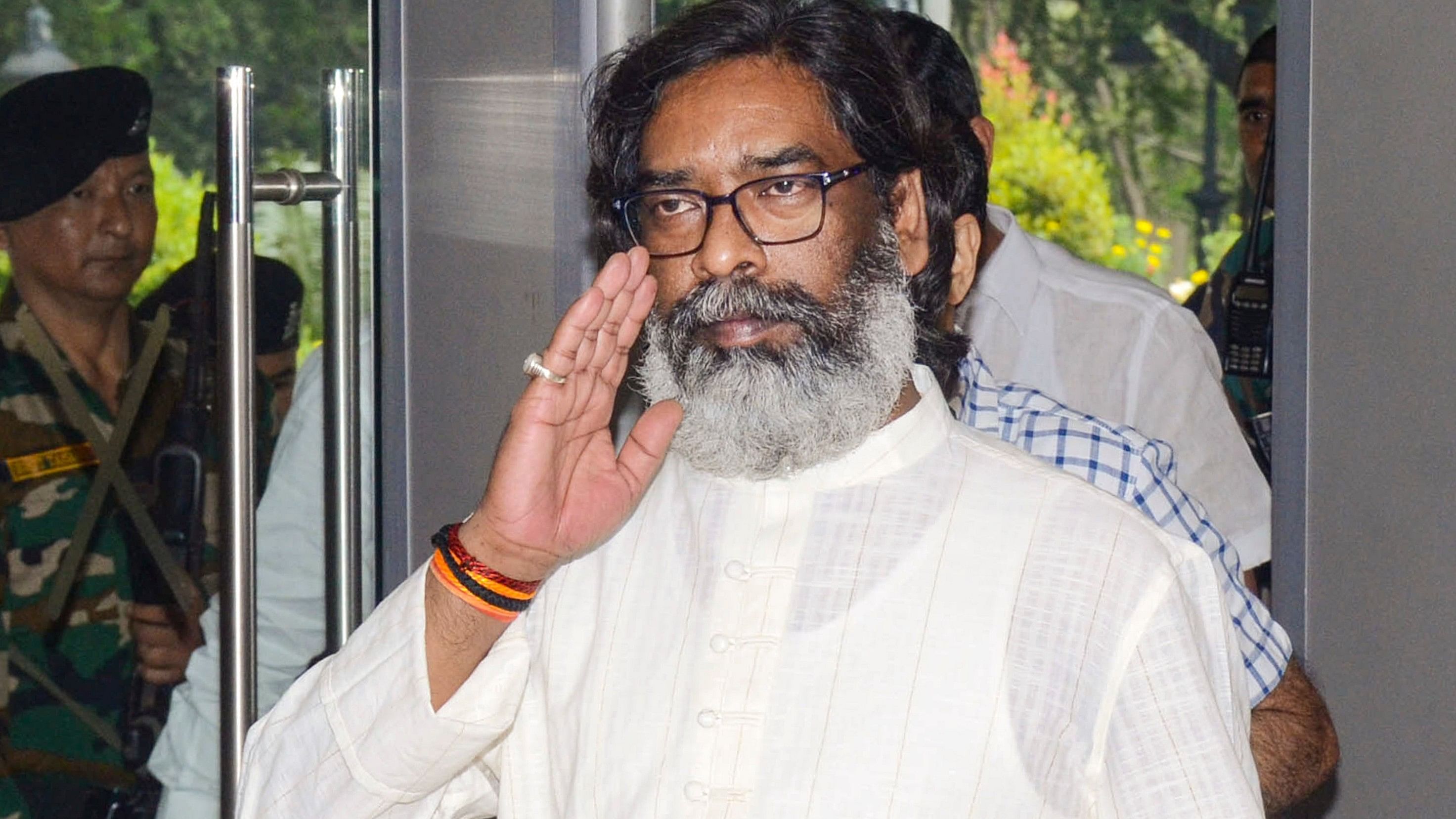
Credit: PTI File Photo
New Delhi: After having frittered away the momentum generated by the Lok Sabha polls, the I.N.D.I.A. bloc led by JMM’s Hemant Soren will tee off in Jharkhand with the BJP which hopes to ride the Haryana hustings to reclaim power in the tribal state by stitching new social combinations under tested state leadership.
On the other hand, the ruling JMM-Congress alliance would again be banking on Chief Minister Hemant Soren’s ability to mobilise tribal voters, the bedrock of JMM’s political edifice built by Hemant’s father and party chief Shibu Soren who spearheaded the separate statehood movement in the mineral-rich south Bihar.
Since the creation of the state in 2000 under the Vajpayee government, this is the first time that the JMM has been able to complete a full five-year term in office, though in the past, the party has remained in power for short stints on many occasions.
For the 2024 Assembly polls, evoking tribal pride, JMM has tried to create a narrative around Hemant’s arrest in a money laundering case filed by the ED and his subsequent release by the high court which noted in its bail order that “there exist reasons to believe that Soren was not guilty".
JMM remains organisationally strong in the hinterland, especially Santhal Pargana (division) from where it has traditionally drawn its electoral strength. In the urban seats, the alliance would be relying on Congress’ ability to muster numbers in a direct contest against the BJP.
In the last Assembly elections, Congress won 16 seats in the House of 90 to take the alliance past the halfway mark while the BJP’s tally dropped to 26.
The BJP, after having experimented with non-tribal leadership under former CM Raghuvar Das between 2015 and 2020, has again handed over the reins to Babulal Marandi, the first CM of the state. After rejoining the BJP, Marandi, also a tribal from the Santhal division, was made the state chief after the party lost the last Assembly polls. Marandi is now the leader of the opposition and remains a strong contender for CM’s post if BJP were to form the next government.
Learning from its past mistakes, the BJP has also made tactical adjustments this time around. In the Chotanagpur plateau, the party has tied up with the All Jharkhand Students Union (AJSU), a local outfit with support among the Kurmi population in northern districts contiguous to Bihar. The two parties had broken up ahead of the 2020 elections resulting in the division of anti-JMM votes that helped JMM-Congress mop up half a dozen more seats.
The BJP also hopes to make inroads in the Kolhan region or the tribal belt around Jamshedpur with the induction of former CM Champai Soren.
The BJP campaign in Jharkhand is being led by Union minister Shivraj Singh Chouhan and Assam CM Himanta Biswa Sarma.
The party leaders, including PM Narendra Modi, in their rallies in the run-up to the announcement of polls have called alleged infiltration of “Bangladeshi and Rohingya infiltration” a major threat in Kolhan and Santhal divisions.
Soren has responded by accusing the BJP and its allies of fomenting communal tension in Jharkhand. “RSS is trying to infiltrate the state like rats and destroy it,” Soren reportedly said in a rally late last month.